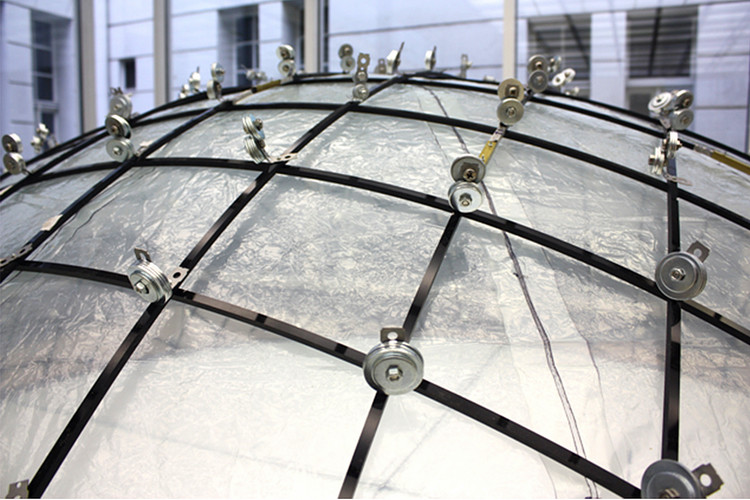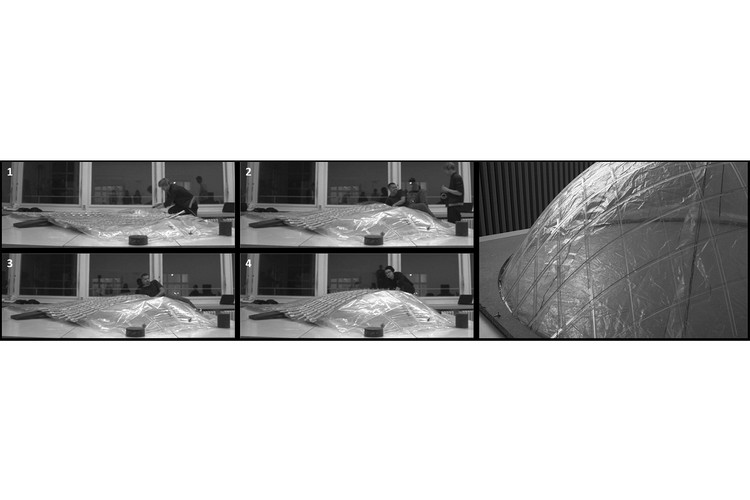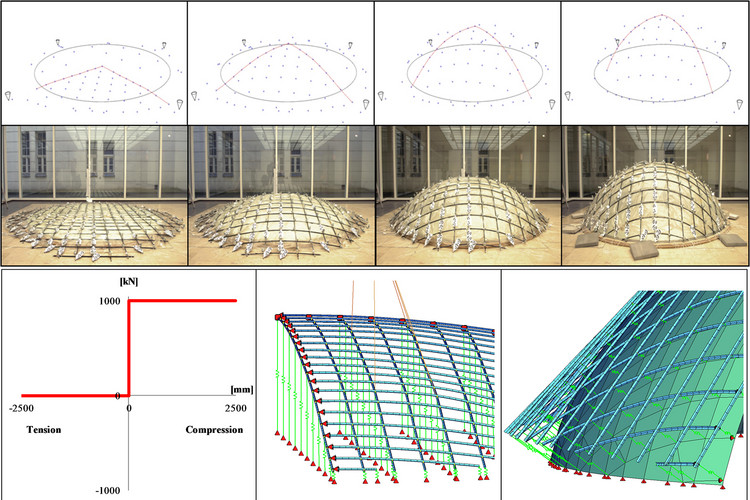Pneumatic formwork
In this project, a detailed comparison is carried out between established (‘lift up’, ‘push up’ and ‘ease down’) as well as novel (‘inflate’) erection methods for strained grid shells by means of FE simulations and a 3D-scanned scaled physical model in order to evaluate key performance criteria such as bending stresses during erection and the distance between shell nodes and their spatial target geometry. These investigations were carried out on a case study of a dome with a 30m span, 10m pitch and constant double curvature. A detailed description is provided of the developed simulation approach, which makes particular use of contact springs for a structural system subject to large deformations, in the SOFiSTiK FE software environment. It is shown for the ‘lift up’ and ‘push up’ methods, that maximum bending stresses are most likely to occur during the erection process and not during end-state static load cases. This risk of beam-overstressing for existing erection methods along with challenges caused by modern safety restrictions, scaffolding costs and build duration can be drastically reduced or even eliminated by making use of inflated pneumatic cushions for the erection of strained grid shells. Furthermore it is argued that the use of pneumatic falsework has the potential to once again facilitate large-span () strained grid shell structures such as have not been realised since the likes of the extraordinary “Multihalle Mannheim” (Happold and Liddell [1]). It is claimed that the overriding constructional benefits of strained grid shells, such as low material usage and fabrication simplicity, are undermined by the methods typically used for their erection.
stiffening and at the same time cladding surfaces. In this project, we study the structural behaviour of an elastic hemispheric gridshell braced with a membrane layer. Different connection configurations between membrane and grid have been analysed and the results have been compared with traditional bracing systems.
Keywords: elastic gridshells, bracing membrane, hybrid structure, active-bending, finite-element-modelling
Bearbeiter: Gregory Quinn (Promotionsvorhaben)
Betreuer: Prof. Dr.-Ing. Christoph Gengnagel


